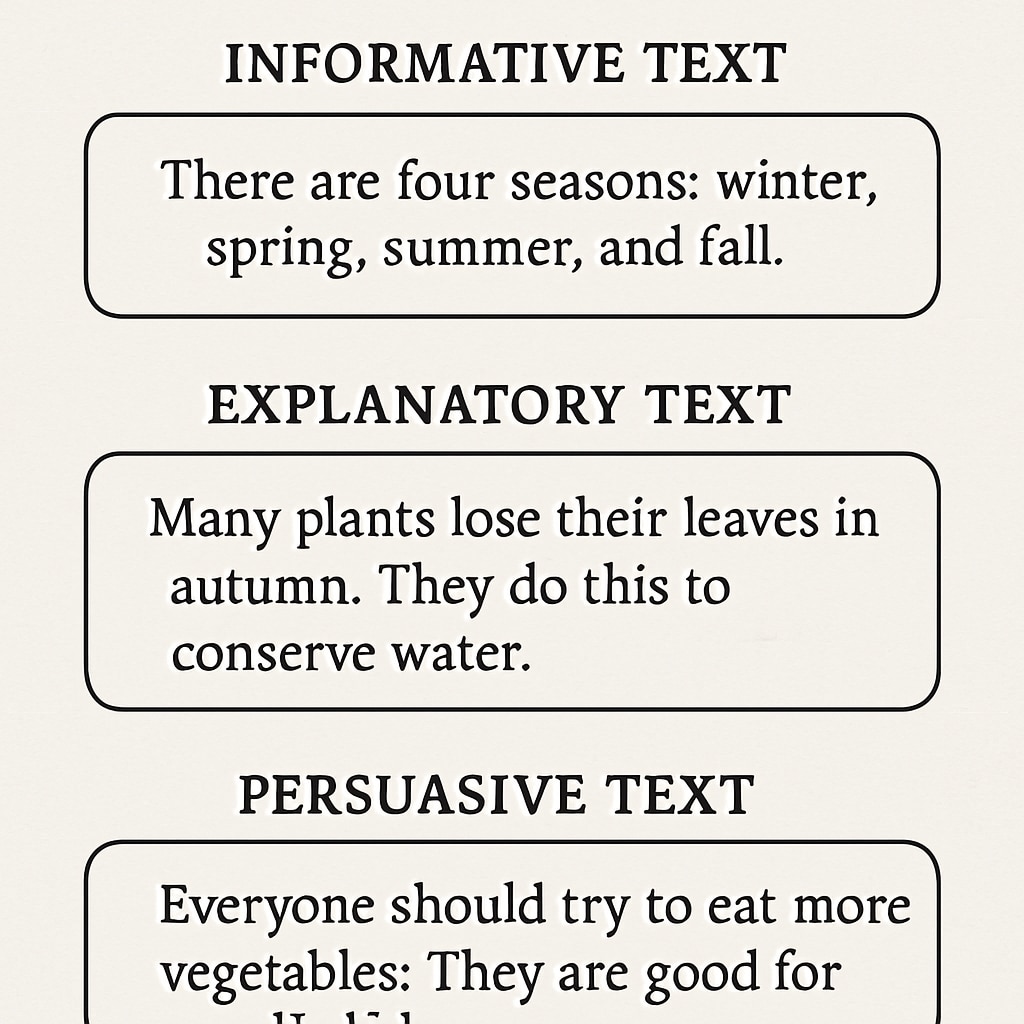In the Functional Skills English exams, particularly at Level 2, understanding the purpose of a text is essential for accurate reading comprehension. Whether you’re dealing with an informative, explanatory, or persuasive text, being able to pinpoint its purpose can significantly enhance your exam performance. This article will guide you through practical strategies to identify text purposes effectively, with examples to illustrate the key differences.
Understanding the Three Main Text Purposes
Texts generally fall into one of three categories: informative, explanatory, or persuasive. Each type has unique characteristics that can help you identify its purpose. Let’s break them down:
- Informative Texts: These are designed to provide facts, data, or knowledge. Examples include news reports, manuals, and instructions. The language is often neutral and objective.
- Explanatory Texts: These aim to clarify or explain a concept or process. Look for detailed descriptions, step-by-step guides, or answers to “how” and “why” questions.
- Persuasive Texts: These seek to influence the reader’s opinion or behavior. They often include opinions, emotive language, and rhetorical devices like questions or repetition.

Key Strategies for Identifying Text Purposes
To determine a text’s purpose, consider the following strategies:
1. Examine the Title and Headings
The title often hints at the text’s purpose. For instance, a headline like “10 Reasons to Recycle” is likely persuasive, while “How to Set Up Your Printer” is explanatory.
2. Analyze the Tone and Language
Words like “you must” or “it’s essential” suggest persuasion. Neutral and factual language, such as “the data shows,” is typical of informative texts. Explanatory texts often use transitional phrases like “first,” “next,” and “as a result.”
3. Look for Structural Clues
Informative texts prioritize key facts and data, often using bullet points or tables. Explanatory texts may follow a sequential structure. Persuasive texts often include arguments supported by evidence or emotional appeals.
4. Identify the Intended Audience
Consider who the text is aimed at. Advertisements target consumers and are usually persuasive, while technical manuals target users and are typically informative.

Practical Examples for Practice
Let’s examine a few examples to practice identifying text purposes:
- Example 1: A leaflet titled “Stop Smoking Now: Your Health Depends on It” uses emotive language and statistics. This is a persuasive text.
- Example 2: A blog post explaining “How Volcanoes Erupt” with diagrams and step-by-step explanations is explanatory.
- Example 3: A weather report listing temperatures and rainfall is informative.
Practicing with real-world examples will help you become more confident in recognizing these types of texts during your exam.
Final Tips for Exam Success
To excel in identifying text purposes during exams, keep the following tips in mind:
- Read Actively: Underline or highlight key phrases or structural elements that indicate the purpose.
- Practice Regularly: Use past exam papers or online resources to familiarize yourself with different text types.
- Time Management: Allocate enough time to analyze the text’s purpose before answering related questions.
By mastering these strategies, you’ll be better prepared to tackle any text in the Functional Skills English exam.
Readability guidance: Use short paragraphs and bullet points to summarize key ideas. Distribute transitional words throughout the text. Limit passive voice and long sentences to enhance clarity.


